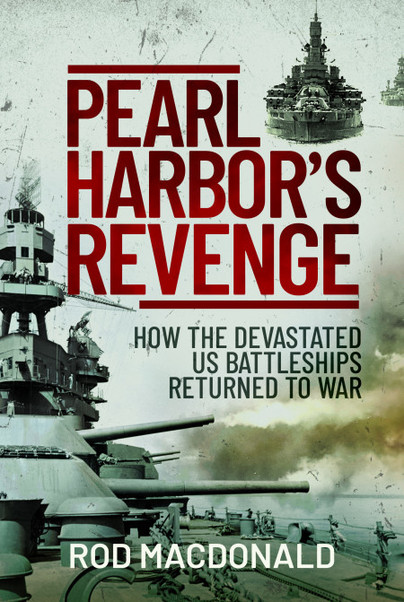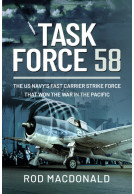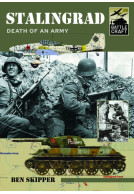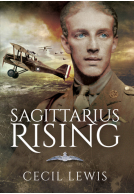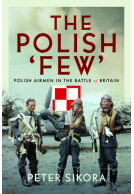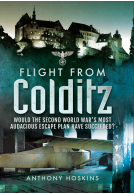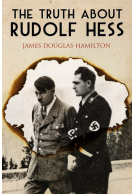Pearl Harbor’s Revenge (Hardback)
How the Devastated U.S. Battleships Returned to War

Pages: 352
Illustrations: 64 black and white integrated illustrations
ISBN: 9781399013291
Published: 13th March 2023
(click here for international delivery rates)
Order within the next 11 hours, 13 minutes to get your order processed the next working day!
Need a currency converter? Check XE.com for live rates
| Other formats available - Buy the Hardback and get the eBook for £1.99! | Price |
|---|---|
| Pearl Harbor’s Revenge ePub (7.9 MB) Add to Basket | £6.99 |
Early on Sunday, 7 December 1941, Japanese carrier-borne aircraft launched a surprise attack against the US Pacific Fleet based at Pearl Harbor. It was a date that President Roosevelt declared “will live in infamy”.
During the strike, Japanese planes attacked the seven US battleships lined up in Battleship Row – and the flag battleship USS Pennsylvania, in drydock for overhaul. The battleship USS Arizona exploded from a bomb hit at the forward magazine killing 1,177 officers and men. On USS Oklahoma, 429 men were killed – many trapped inside as the great battleship capsized after aerial torpedo strikes. USS West Virginia, meanwhile, was hit by at least seven torpedoes and several bombs, and engulfed in flames; she settled onto the bottom on an even keel. USS California was hit by a pair of torpedoes and a bomb, flooding slowly, she too settled on the bottom. The other four battleships present were more lightly damaged, with the crippled Nevada, the only battleship to get underway during the attack, being successfully beached.
By the time the assault was over, eight battleships, three light cruisers, three destroyers, a training ship and other smaller vessels had been sunk or damaged. Hundreds of US aircraft had been damaged or destroyed, whilst 2,403 Americans had been killed.
Within a week of the Japanese attack, a great salvage organisation had been formed. Very quickly the lightly damaged battleships Pennsylvania, Maryland and Tennessee had been repaired in naval yards and put back into service to protect the west coast of the USA.
Of the eight battleships attacked, all but Arizona were raised, temporarily patched-up and sent back to naval yards on the west coast of America for final repair and modernisation. Main battery guns and ordnance were recovered from the wrecked Arizona, which would then be left to rest on the bottom of the harbour for eternity – as a memorial to the events of that fateful December day. USS Nevada was lifted off the bottom in February 1942, California in March 1942 and West Virginia in June 1942. The capsized Oklahoma, whilst eventually parbuckled and raised, was found to be too badly damaged to be fully rebuilt.
Six of the eight battleships would thus return to service, with improved protection against bombs and torpedoes and being fitted with the latest anti-aircraft and gunnery systems. They would re-enter to the war to wreak a terrible revenge – making their presence felt during the reconquest of the Aleutian Islands and the Philippines, and the great battles of Leyte Gulf, Iwo Jima and Okinawa. Nevada would go on Atlantic convoy duty before bombarding German positions off Utah beach as the D-Day Normandy landings began. This is the story of those six.
"Well organized and presented, the book can be used as a reference for individual ships and battles... MacDonald gives the reader a greater appreciation for the tremendous work that went into returning gravely damaged old battleships to war worthiness. The author presents the necessary details of naval architecture and engineering in a clear manner, educating the general reader without weighing down the narrative. He includes a handy list of naval acronyms and abbreviations for reference. Chapter notes, a bibliography, additional resources, and an index are also appreciated. There is great general interest in these ships as historical military artifacts. Pearl Harbor’s Revenge; How The Devastated US Battleships Returned to War is an important addition to naval history and more broadly, the history of the Second World War."
The Northern Mariner/Le marin du nord (Vol. 33, Nos 3 and 4).
Rating: 5 out of 5 stars
NetGalley, Pat Lorelli
The author begins with the destruction of Pearl Harbour and what had taken place that day. He goes through each Battle Ship and the destruction that took place along with the other areas around where planes and equipment and most importantly 2,403” Americans had been killed”. Killing 1,177 in Arizona alone. Of the eight Battle ships destroyed all were raised to fight again except for the Arizona. The author describes how within a week salvaging had begun and within months several were operational to go to the West cost for additional repair and recoupment. All but the USS Nevada would go on to fight again in the Pacific. The Nevada was sent to the Atlantic where she spent time watching convoys and also participating in D-Day. The others would go on and serve and battle the Japanese and the author goes through each of the records What I liked is that the author did not repeat each story he would have you refer back to a chapter if he had already given you the information about a Battleship while talking about others, this helped make the book a much better read. Overall a really good book and a true testament to the men and women both on the sea and the land to help defeat the enemy and fight for the greater good. Very much worth the read.
"This well-organized book neatly lays out the wartime experience of the Pearl Harbor survivors."
WWII History
The discussion of recovery, salvage, repair, and revenge is what makes Macdonald’s book distinctive and illustrates his knowledge of diving and salvage as well as scholarship in documenting the engagements in which these vessels participated.
The National Maritime Historical Society
For anyone wishing to learn more about the six battleships which returned to service after the attack at Pearl Harbor, Rod MacDonald’s Pearl Harbor’s Revenge: How the Devastated US Battleships Returned to War is an excellent source.
It is informative and detailed with some interesting and little-known anecdotes as well. The endnotes and select bibliography are drawn from relevant primary and appropriate secondary sources. The writing is clear and easy to follow. There are several maps and many pictures to assist the reader
A good history book for the naval and WW2 enthusiasts.
NetGalley, Ron Baumer
As featured in
The Bookseller, Jan 23
About Rod MacDonald
ROD MACDONALD is an internationally renowned shipwreck explorer, undersea adventurer and best-selling diving author with eleven books about shipwrecks, the culmination of a lifetime of diving. His beautifully illustrated books are the internationally accepted definitive guides to many world-famous dive locations such as Scapa Flow and Truk Lagoon. Rod is a graduate of the University of Aberdeen School of Law. He is a Fellow of the Explorers Club of New York and a Patron of the GB & Ireland Chapter of the Explorers Club. When not writing or exploring shipwrecks he is a big boat yachtsman, former volunteer lifeboatman, a RYA Advanced Powerboat Instructor and a Search and Rescue (SAR) instructor. He lives in Stonehaven, a small fishing town on the north east coast of Scotland with his wife, his two children having flown the coup.







